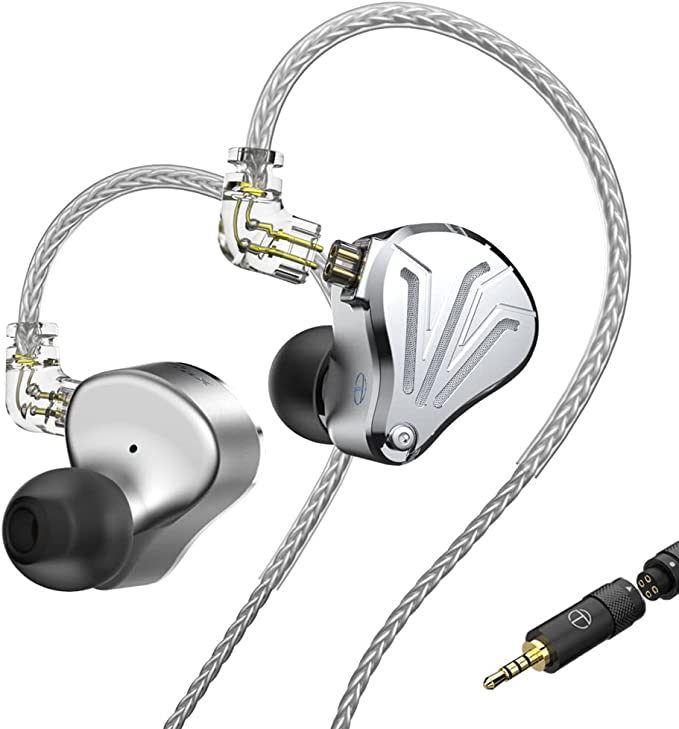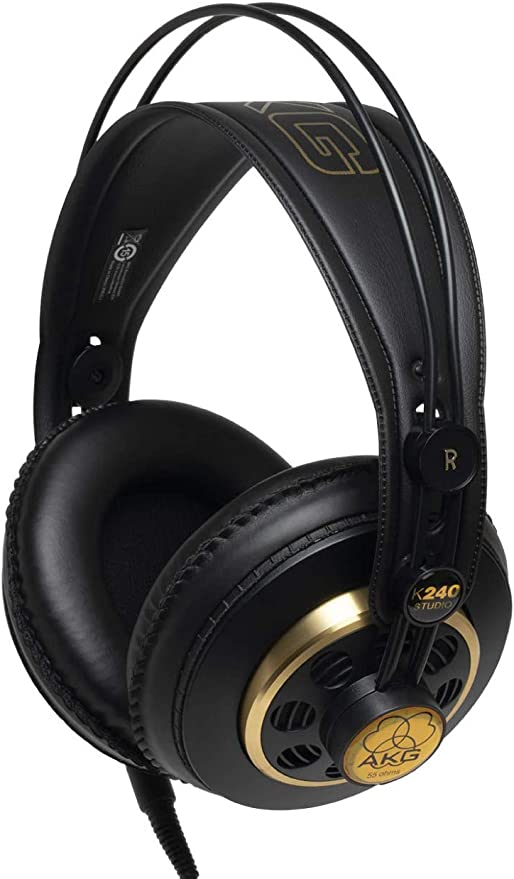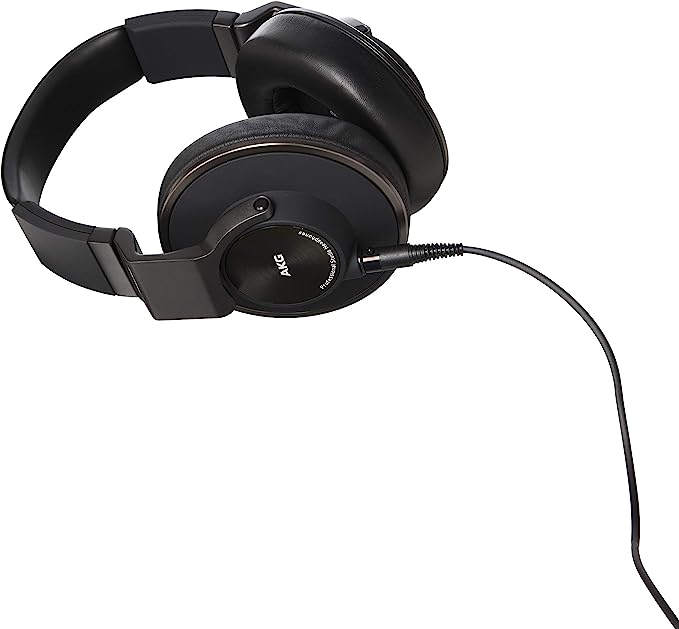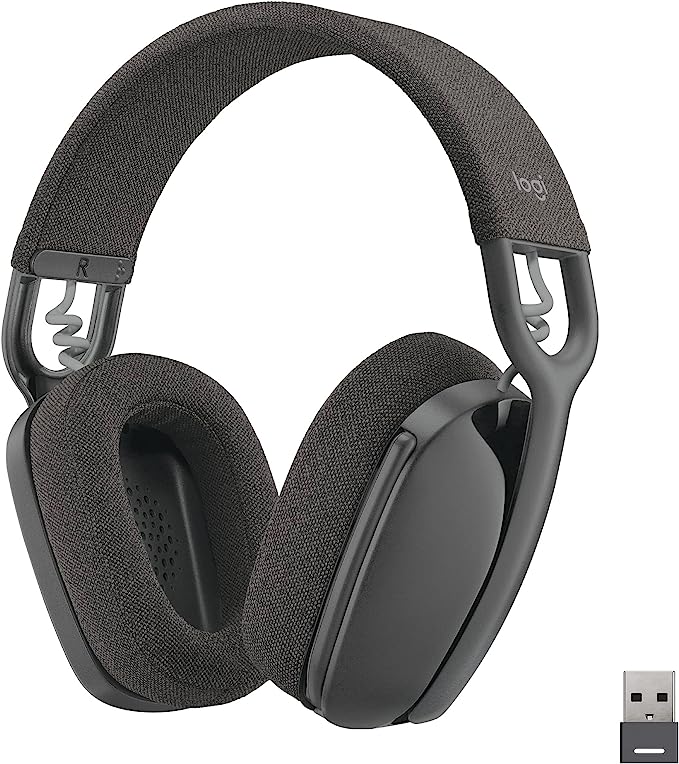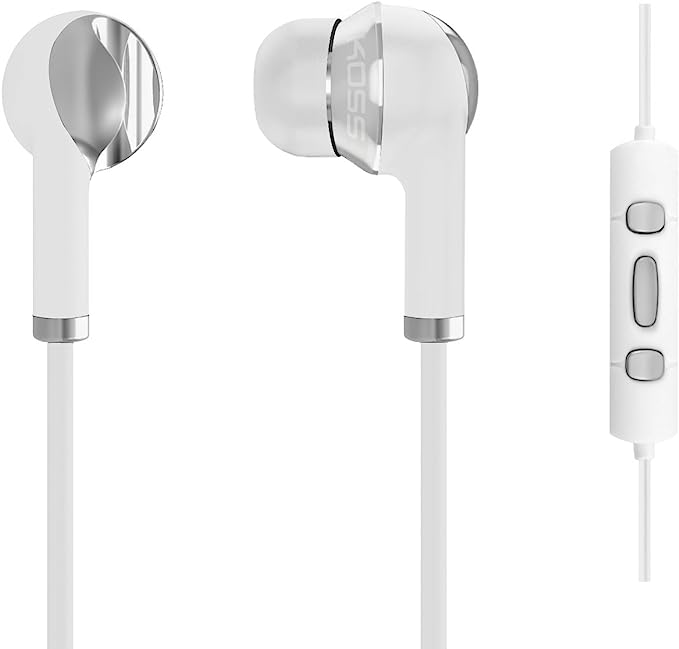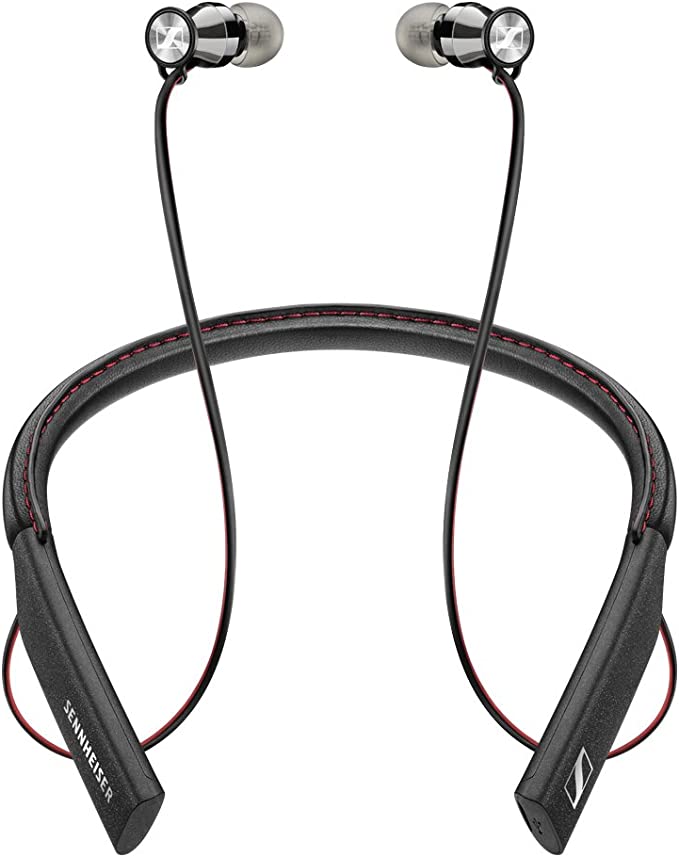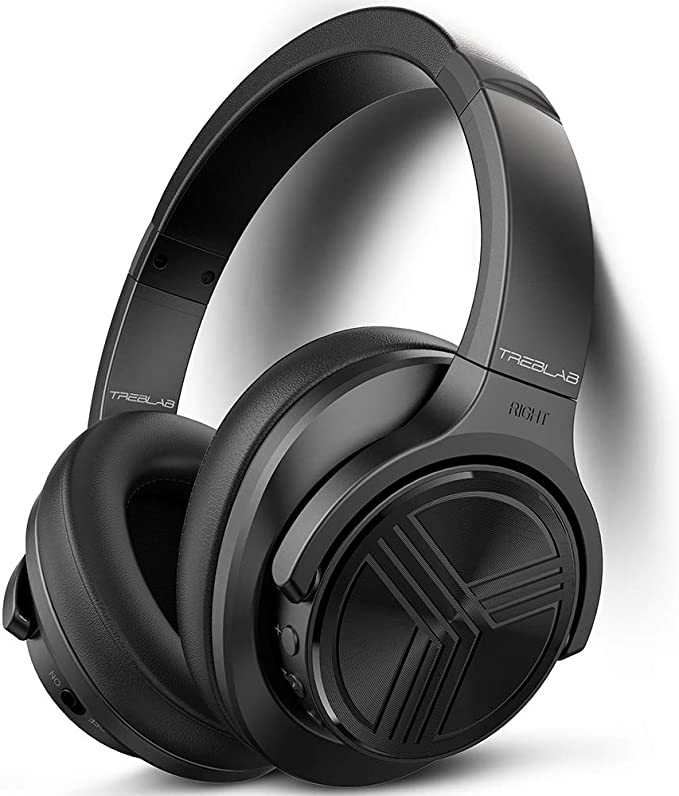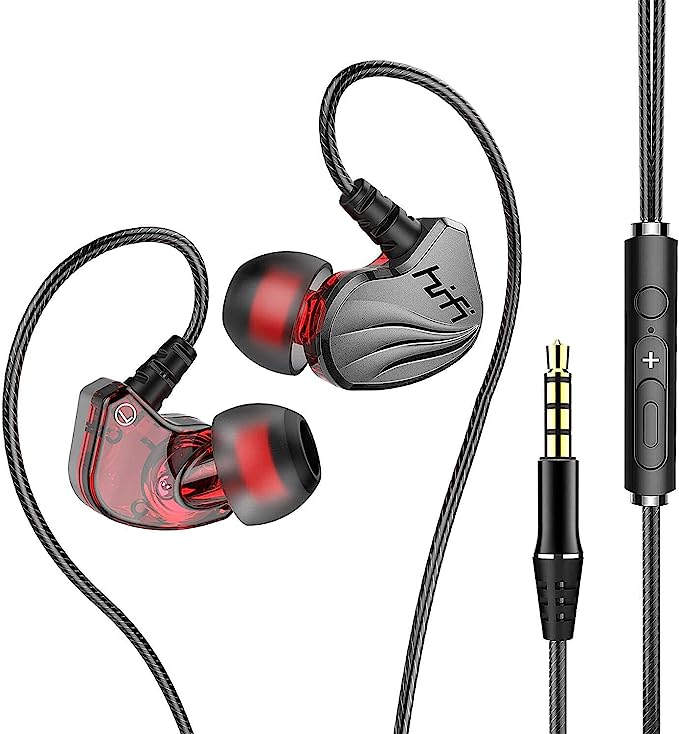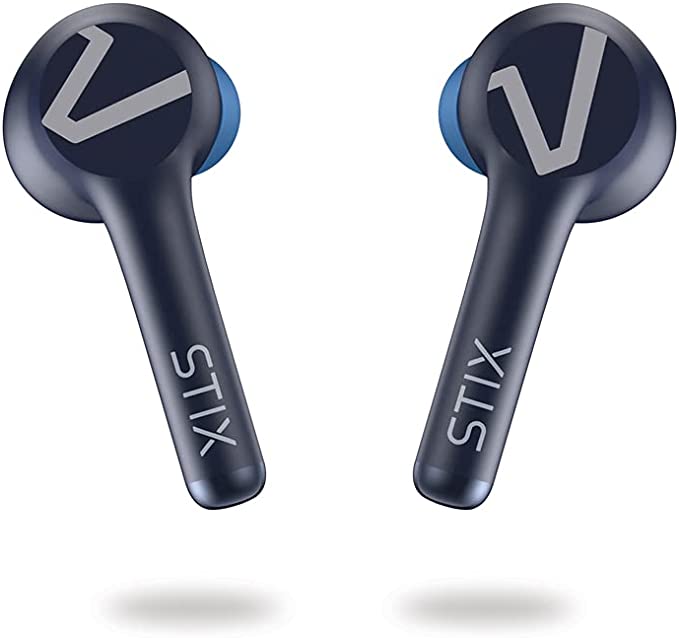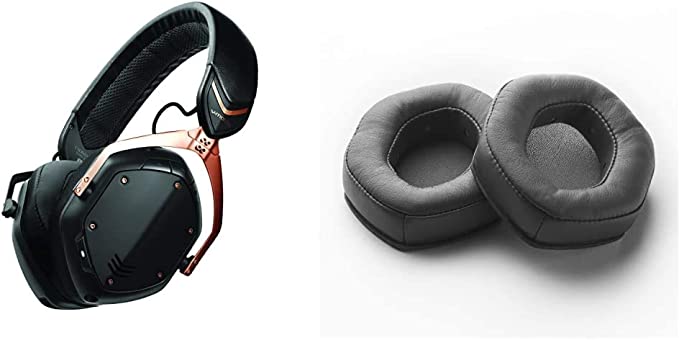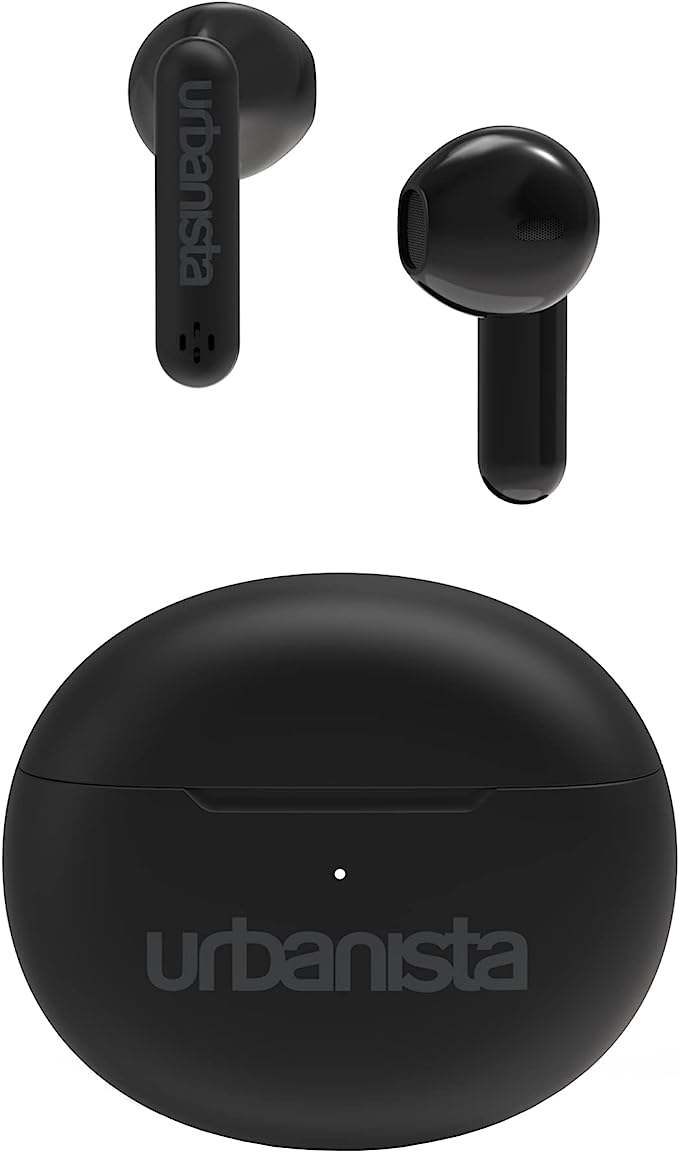FiiO FH9 Headphones - Audiophile Quality Meets Portability
Update on May 30, 2025, 11:51 a.m.
There’s a universal magic in sound. A single note can transport us, a melody can mend a heart, and the raw energy of a live performance can feel like lightning captured in a bottle. We chase these moments, yearning to replicate that pure, unadulterated sonic experience in our daily lives. But here’s a fascinating secret: our ears, those incredible biological instruments, are astonishingly discerning and incredibly hard to please. The journey from a recorded sound wave to a deeply felt emotion is paved with complex physics and intricate engineering, especially when we try to shrink that grand concert hall experience into something that fits in our pocket.
Yet, some marvels of modern engineering dare to take on this monumental challenge. They aim not just to reproduce sound, but to rekindle that original spark, to deliver an experience so immersive it feels like the artist is right there with you. Today, we’re not just looking at a pair of earphones; we’re embarking on an expedition, a scientific exploration into one such creation: the FiiO FH9. Think of it as our detailed case study in the art and science of high-fidelity audio, shrunk to the intimate scale of an in-ear monitor (IEM). So, shall we peek under the hood and see what makes this tiny titan tick?

The Heartbeat of a Giant, Shrunk: The Hybrid Symphony of Drivers
Imagine the heart of a sound system – its speakers. Now, miniaturize that concept, not once, but multiple times, and you begin to grasp the complexity within an advanced IEM like the FH9. It doesn’t rely on a single-voice approach; instead, it employs a hybrid orchestra of seven drivers in each earpiece, a carefully choreographed ensemble designed to cover the vast tapestry of sound. This isn’t just about more drivers; it’s about the right drivers, each playing its specialized part.
The Bass Alchemist: Understanding the Dynamic Driver and its DLC Soul
Ever wondered where that satisfying, gut-rumbling bass punch comes from in your favorite tracks? Or the rich, resonant thrum of a cello? Often, the credit goes to a dynamic driver. Think of it as a traditional loudspeaker in miniature: a voice coil, a magnet, and a diaphragm. When an electrical audio signal energizes the coil, it moves the diaphragm back and forth within the magnetic field, pushing air and creating those lovely sound waves, especially the ones that make you feel the music.
The FiiO FH9 houses a rather special 13.6mm dynamic driver, and its secret weapon lies in its diaphragm material: DLC, or Diamond-Like Carbon. Now, what on earth is that? DLC isn’t quite the stuff of engagement rings, but it’s a remarkable form of amorphous carbon with a very high percentage of $sp^3$ hybridized carbon atoms – the same type of bonding that gives natural diamond its legendary hardness. It’s like capturing the spirit of a diamond in a thin, resilient film.
So, why go to such exotic lengths for a bass driver’s diaphragm? The science is compelling: * Incredible Rigidity: Like a perfectly tuned drum skin that vibrates uniformly without wobbling or deforming, a DLC diaphragm resists distortion even when pumping out powerful bass notes. This means cleaner, tighter, and more accurate low frequencies. No mushy, ill-defined boom here. * Excellent Damping: DLC has a knack for quickly quelling unwanted vibrations within itself. Imagine striking that perfect drum skin – you want the pure note, not a lingering, muddy after-ring. This high internal damping translates to faster transient response. That’s a fancy way of saying the driver can start and stop on a dime, crucial for articulating rapid bass lines or the sharp impact of a kick drum. * Surprising Lightness: Despite its hardness, DLC can be made very thin and light. A lighter diaphragm can react more quickly to the audio signal, contributing further to that speed and detail.
FiiO calls this their 2nd generation DLC dynamic driver, further enhanced by a redesigned magnetic circuit that boasts a 20% higher magnetic density. Think of this as giving the driver a more powerful “engine” to control that large, stiff-yet-light DLC diaphragm with even greater authority and precision. The result? Bass that isn’t just heard, but deeply felt – potent, agile, and rich with texture.

The Detail Weavers: The Chorus of Knowles Balanced Armatures
But music is so much more than just bass, isn’t it? What about those delicate whispers in a ballad, the subtle breath a singer takes, the intricate dance of a violin, or the crystalline shimmer of a high-hat cymbal? For these finer details, particularly in the midrange and high frequencies, the FH9 turns to a different kind of specialist: the Balanced Armature (BA) driver.
If a dynamic driver is a miniature loudspeaker, a BA is more like a tiny, highly precise electromechanical motor. Picture a miniature reed (the armature) delicately balanced between two magnets, surrounded by a coil. When the audio signal passes through the coil, it causes this armature to vibrate with incredible speed and accuracy. This vibration is then transferred via a tiny drive rod to a small, stiff diaphragm, which produces the sound. Think of it as the intricate, rapid wingbeats of a hummingbird, capable of producing incredibly nuanced movements.
BAs are prized for their efficiency and their ability to render complex passages with exceptional clarity and speed. The FiiO FH9 employs a specialized team of six BA drivers from Knowles in each earpiece. Knowles is a name synonymous with high-quality balanced armatures, a veteran in crafting these miniature marvels. In the FH9, this sextet isn’t just a random collection; it’s a custom-configured chorus, with different BA units likely optimized to handle specific slices of the midrange and treble frequencies. This allows for a highly resolved and articulate presentation, ensuring that no subtle detail is lost in the mix.
The Conductor’s Baton: Why This Hybrid Harmony Works
So, why this elaborate “hybrid” setup – a powerful dynamic driver for the lows, and a team of nimble balanced armatures for the mids and highs? It’s the audio engineer’s dream of achieving the “best of both worlds.” Dynamic drivers excel at moving large amounts of air for impactful bass, while BAs shine in their ability to deliver lightning-fast transients and intricate detail in the higher registers.
The magic (and the challenge) lies in making these different types of drivers sing together in perfect harmony. This is where an unseen but crucial component comes into play: the electronic crossover. Think of it as an intelligent traffic controller for audio frequencies. It takes the incoming music signal and expertly divides it, sending the low frequencies to the DLC dynamic driver and the appropriate mid and high frequencies to their designated BA drivers. This ensures each driver operates in its optimal range, minimizing distortion and maximizing its inherent strengths. When executed well, as FiiO aims to do in their flagship, this hybrid approach can create a soundscape that is simultaneously powerful and delicate, expansive and incredibly detailed – a true symphony in your ears.
The Fortress of Solitude: Titanium, Resonance, and the Pursuit of Purity
A musical instrument’s character is profoundly shaped by the materials it’s made from and the space in which it resonates. The same is true for earphones. The drivers, no matter how sophisticated, need a precisely engineered environment to perform their best. In the FiiO FH9, this environment is sculpted from titanium alloy.
The Titanium Enigma: More Than Just Premium Feel
Titanium. The mere mention of it evokes images of aerospace engineering, high-performance sports equipment, and luxury watches. And indeed, it lends the FH9 a decidedly premium look and feel. But its inclusion here is far from just a cosmetic choice; it’s a deeply scientific one rooted in acoustics.
From a materials science perspective, titanium alloys are celebrated for their exceptional strength-to-weight ratio and, crucially for audio, their high internal damping and rigidity. Imagine a concert hall. If its walls were flimsy and vibrated wildly with every note played, the music would become a chaotic, muddy mess. Similarly, if an earphone’s shell (its “acoustic chamber”) resonates excessively in sympathy with the sound waves generated by the drivers, it can introduce unwanted colorations, harmonic distortions, and a general smearing of detail.
Titanium’s inherent properties help to create an “acoustically inert” housing. Its rigidity helps to greatly minimize these unwanted resonances. The shell essentially refuses to “sing along” with the drivers, allowing you to hear the pure output of the drivers themselves, unmarred by the chamber’s own sonic signature. This pursuit of purity is what drives the choice of such an advanced material. It’s about creating a steadfast, non-interfering foundation for the sound.
Sculpted by Precision: The Art of Five-Axis CNC Machining
Crafting these titanium fortresses is no simple task. FiiO employs five-axis CNC (Computer Numerical Control) machining for each FH9 ear unit. Now, what does that mean? CNC machining uses computer-guided tools to precisely cut and shape materials. “Five-axis” refers to the ability of the cutting tool to move along five different axes simultaneously. This allows for the creation of incredibly complex, ergonomic curves and internal structures with exceptionally tight tolerances – think of the meticulous precision of a master watchmaker crafting a complex timepiece.
Why is this level of precision so vital? * Acoustic Consistency: Minute variations in the internal chamber_volume and shape can affect sound. CNC machining ensures that each earpiece, and indeed each unit produced, adheres very closely to the intended design, leading to a more consistent and predictable acoustic performance. * Structural Integrity: A precisely machined shell is a strong shell, contributing to the overall durability and longevity of the IEM. * Ergonomic Perfection: The complex, organic curves required for a comfortable and secure fit in the human ear are best achieved with such advanced manufacturing techniques.
This marriage of a high-performance material like titanium with cutting-edge manufacturing is all in service of creating the optimal acoustic environment for those sophisticated drivers to perform at their peak.

The Unseen Architect: Battling Internal Echoes and Sibilant Foes
Beyond just the material and its precise shaping, FiiO states that the FH9’s shell is “specially engineered to eliminate unwanted harmonic resonance generated as sound waves travel through the shell, sound tube and cavity – which greatly eliminates undesirable sibilance in the sound.” Sibilance, that sometimes-piercing “hiss” on ‘s’, ‘sh’, or ‘t’ sounds in vocals or cymbals, can be a major source of listening fatigue.
This “special engineering” likely involves a sophisticated internal acoustic design. Picture sound waves bouncing around inside a small chamber.If not managed properly, these reflections can give rise to standing waves (a phenomenon where specific frequencies are amplified or cancelled out) or resonant peaks, resulting in an uneven frequency response and audio artifacts such as sibilance or other harsh sounds. The internal geometry of the FH9’s shell, the shape of its sound bores (the tubes leading sound to your ear), and potentially the strategic placement of damping materials (though not explicitly detailed) all play a role in taming these internal acoustic gremlins, aiming for a smoother, more natural, and less fatiguing listening experience.
The Spice Rack of Sound: Tailoring Your Audio with Interchangeable Filters
Imagine you’re a chef, and you have a beautifully prepared dish. Now, what if you could add just a pinch of a specific spice to subtly alter its flavor profile to your exact liking? The FiiO FH9 offers a similar kind of delightful control over its sonic presentation through its three pairs of interchangeable sound filters. These tiny, screw-on components attach to the nozzle of the IEM (where the sound exits) and allow for a degree of sonic personalization.
But how does such a small piece achieve this? The science lies in the principles of acoustic impedance and damping. Think of acoustic impedance as the “resistance” that air encounters as it tries to flow through a particular pathway or material. Damping refers to the absorption or attenuation of sound energy. Each of the FH9’s filters – the red, black, and green – has its own unique acoustic impedance, likely determined by the density and porosity of the material within it, and the design of any fine mesh or perforations.
- Red Filter (Enhanced, dynamic bass focus): This filter might offer slightly less resistance or damping in the lower frequencies, or a specific damping characteristic that allows the bass produced by the dynamic driver to come through with more perceived impact or warmth, perhaps by subtly attenuating some higher frequencies.
- Black Filter (Clear, transparent, balanced timbre): This is often designed to be the “reference” or most neutral-sounding filter, providing a balanced acoustic impedance across the audible spectrum, aiming for the most faithful representation of the original recording.
- Green Filter (Highly resolving, detailed treble focus): Conversely, this filter might introduce a bit more damping in the lower or mid frequencies, or less in the higher frequencies, allowing the intricate details from the balanced armature drivers in the treble region to shine through with greater perceived clarity and air.
It’s like choosing different types of artist’s brushes to achieve different strokes or textures in a painting, or, perhaps more aptly, like using different focusing lenses on a camera. By subtly altering the acoustic pathway right before the sound enters your ear canal, these filters empower you to fine-tune the sound signature to better match your personal preferences or even different genres of music. It’s a clever application of acoustic principles that adds a welcome layer of engagement and personalization to the listening experience, all grounded in understandable science.
The Silver Thread: Does a Pure Silver Cable Truly Sing a Sweeter Song?
Now, we venture into one of the more hotly debated topics in the audiophile world: cables. Can the wire connecting your earphones to your music player really make a significant difference to the sound you hear? While opinions vary wildly, and a healthy dose of skepticism is always wise, let’s look at the science FiiO incorporates into the FH9’s stock cable.
The FH9 comes equipped with a cable made of high-purity monocrystalline pure silver. It’s an impressive specification: 8 branches, each containing 28 individually isolated wires, for a grand total of 224 wires.
Silver’s Claim to Fame: Conductivity and Purity
From a fundamental materials science perspective, silver holds the crown as the most electrically conductive of all metals. In theory, higher conductivity means lower electrical resistance. For a delicate audio signal, which is essentially a complex alternating current, lower resistance could translate to less signal loss or alteration as it travels from your audio source to the intricate drivers within the earphones. Monocrystalline silver, where each wire strand is ideally a single continuous crystal grain, is purported to offer an even smoother path for electrons, minimizing disruptions at grain boundaries.
The Litz Weave: Outsmarting Unwanted Electrical Gremlins
Beyond the material itself, the construction of the cable is also noteworthy. It employs a Litz-style braid. This isn’t just for aesthetics or tangle resistance; it’s designed to combat some sneaky electrical phenomena that can particularly affect higher audio frequencies: * Skin Effect: At high frequencies, electrical current has a tendency to concentrate near the surface (the “skin”) of a conductor, rather than flowing uniformly through its entire cross-section. This effectively reduces the usable conductive area, increasing resistance at those higher frequencies. * Proximity Effect: When multiple conductors carrying high-frequency currents are close together (as they are in a cable), their magnetic fields can interact, causing the current distribution within each conductor to become even more uneven, further increasing resistance.
A Litz wire attempts to mitigate these effects. Each of those 224 fine wires is individually insulated and then braided together in a specific pattern. This clever arrangement means that each strand, over the length of the cable, tends to occupy various positions within the bundle – sometimes at the surface, sometimes near the core. This helps to equalize the current distribution and ensures that more of the conductor’s total cross-sectional area is utilized, even at higher frequencies. The goal? To maintain a more consistent impedance across the entire audio spectrum and preserve the integrity of those delicate high-frequency details that contribute to airiness and resolution.

The Journey’s End: Connectors and the Balanced Question
The cable connects to the FH9 earpieces via robust and reliable MMCX connectors, a standard that allows for easy cable replacement or upgrades if desired. At the other end, you’re given a versatile set of interchangeable plugs: 2.5mm, 3.5mm, and 4.4mm.
The familiar 3.5mm plug is for standard single-ended audio connections found on most devices. The 2.5mm and 4.4mm plugs, however, are for balanced audio output, a feature increasingly found on dedicated digital audio players and headphone amplifiers.
What’s the science behind balanced audio? In a single-ended connection, both left and right channels share a common ground path. In a balanced connection, each channel (left and right) has two dedicated signal paths (positive and negative polarity) plus its own separate ground. This offers a couple of potential advantages: * Common-Mode Noise Rejection: Because the two signals for each channel are opposite in polarity, any noise or interference that gets picked up equally by both paths (common-mode noise) can be effectively cancelled out at the amplifier stage. This can lead to a “blacker” background and cleaner sound. * Reduced Crosstalk: Separating the ground paths for left and right channels can significantly reduce electrical crosstalk (signal leakage) between them, potentially improving stereo imaging and separation.
While the audible benefits of balanced connections can depend on the quality of the entire audio chain, providing the option showcases a commitment to offering versatile and high-performance connectivity. The TPU (Thermoplastic Polyurethane) sheath on the cable itself is chosen for its durability, flexibility, and resistance to yellowing and stiffening over time, ensuring the cable remains a reliable partner to the IEMs.
Beyond the Blueprint: When Science Meets the Soul
While we’ve delved deep into the individual components and the science that guides their design, it’s essential to remember that an In-Ear Monitor like the FiiO FH9 is more than just the sum of its parts. It’s a holistic system where every element is intended to work in concert.
Key technical specifications like Frequency Response (10Hz-40kHz) tell us that the FH9 is designed to reproduce an incredibly wide range of sounds, from the deepest sub-bass rumble well into the ultrasonic frequencies associated with “Hi-Res Audio” (the human ear typically perceives up to around 20kHz). This vast range suggests the potential for capturing the full harmonic richness of music. An Impedance of 18Ω (Ohms) indicates it’s relatively easy to drive, meaning you don’t necessarily need a beastly amplifier to get satisfying volume levels; your smartphone or portable player should suffice. Coupled with a high Sensitivity of 108dB (decibels, a measure of how loud they play for a given power input), the FH9 is efficient and can get quite loud without much effort from your source device.
But these numbers, while informative, only tell part of the story. The true alchemy happens when all this meticulously applied science – the responsive DLC diaphragm, the precise BA drivers, the acoustically inert titanium shell, the carefully tuned filters, and the pure signal pathway of the cable – translates into an experience. An experience where you’re not just listening to a recording, but are transported into the music itself. Where you can discern the subtle rasp of a bow on a string, the precise placement of instruments in an orchestra, or the raw emotion in a singer’s voice.
The FiiO FH9 stands as a compelling example of how far audio engineering has progressed, especially in the challenge of delivering vast, detailed, and emotionally engaging sound from such a compact and personal form factor.
Coda: Your Sonic Adventure Awaits
Our journey through the scientific and engineering marvels of the FiiO FH9 has, I hope, illuminated some of Bthe intricate thought and advanced technology that can go into crafting a high-fidelity listening experience. It’s a world where material science, acoustic physics, precision manufacturing, and a deep understanding of psychoacoustics all converge.
The FiiO FH9, with its hybrid driver heart, its diamond-like resilience, its titanium fortress, and its silver lifelines, represents one dedicated path on the unending quest for perfect sound. But the true beauty of audio is that this quest is also a deeply personal one. While science provides the tools and the blueprint, it’s your ears, your preferences, and your connection to the music that ultimately define what “good sound” means to you.
So, whether you’re a seasoned audiophile or just beginning to explore the richer dimensions of sound, I encourage you to listen critically, to listen joyfully, and to appreciate the incredible blend of art and science that allows us to carry entire orchestras, rock bands, and soulful vocalists right in our pockets. Your own sonic adventure is out there, waiting to be discovered.
